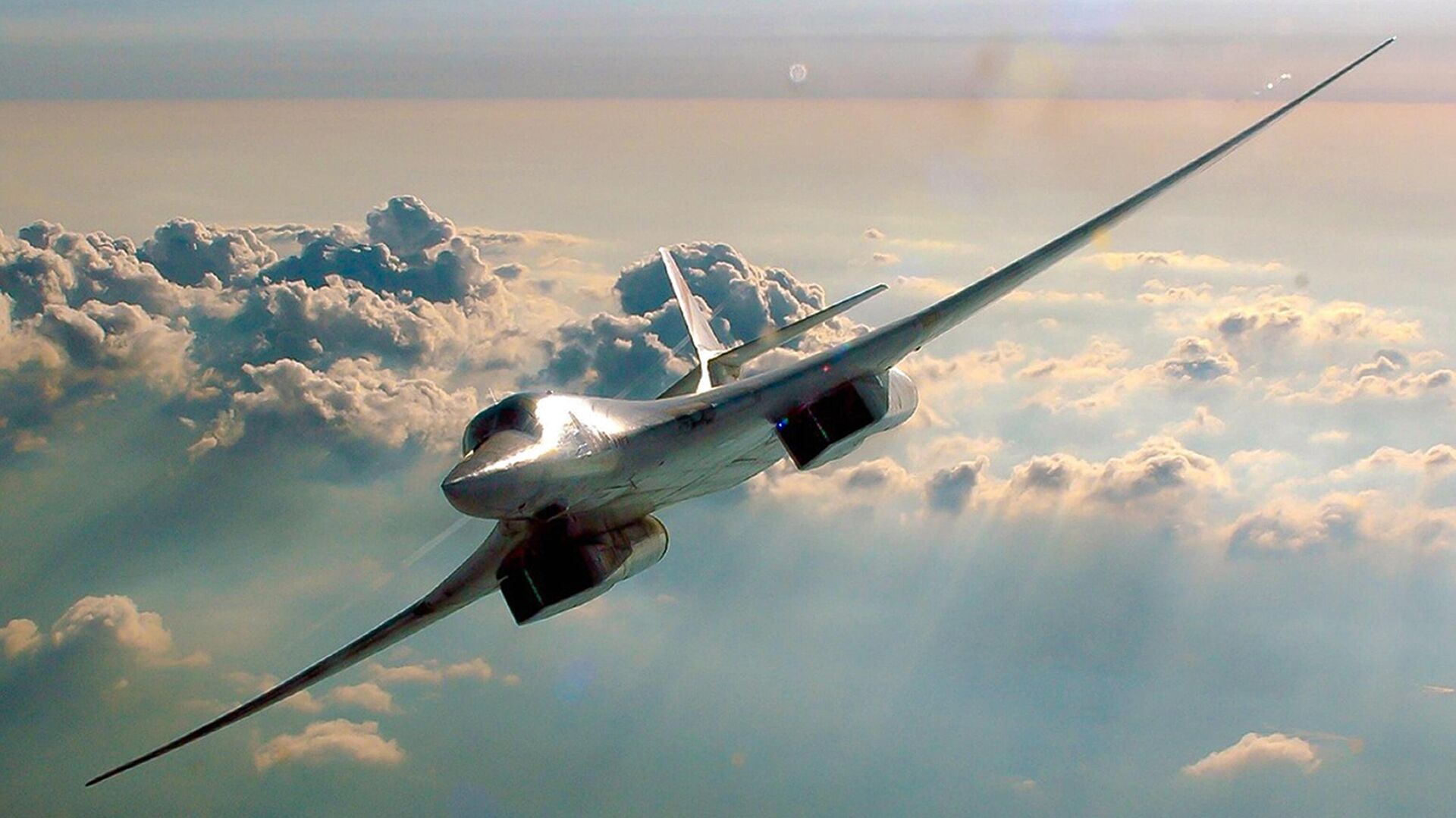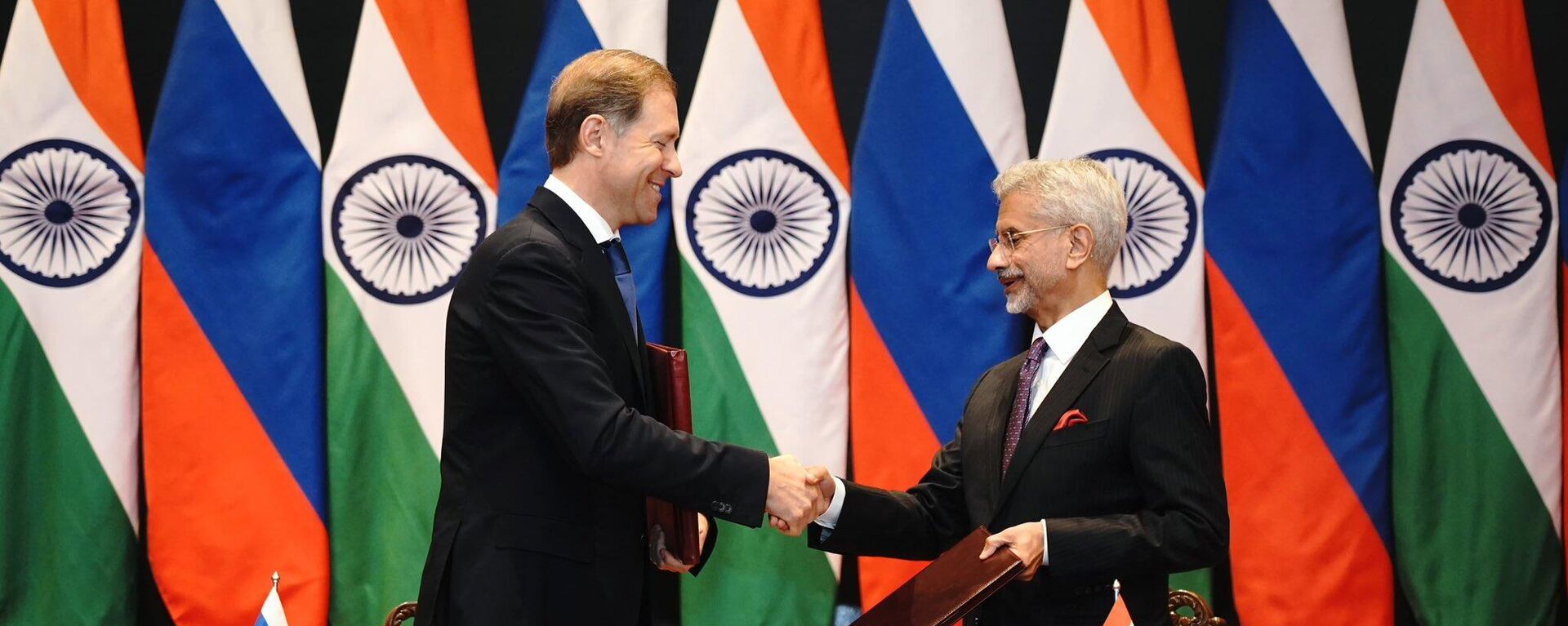https://sputniknews.in/20241112/tu-160-bomber-potential-game-changer-for-indian-air-forces-strike-power-8391362.html
Tu-160 Bomber: Potential Game-Changer for Indian Air Force’s Strike Power
Tu-160 Bomber: Potential Game-Changer for Indian Air Force’s Strike Power
Sputnik India
India has a wide variety of multi-role fighter jets in its air force but lacks strategic bombers. Sputnik India examines how a Russian heavy bomber could... 12.11.2024, Sputnik India
2024-11-12T20:16+0530
2024-11-12T20:16+0530
2024-11-12T20:22+0530
indo-russian relations
india
russia
new delhi
indian air force (iaf)
delhi
moscow
missiles
long-range surface-to-air missile system (lrsam)
us
https://cdn1.img.sputniknews.in/img/07e8/0b/0c/8392417_0:226:3069:1952_1920x0_80_0_0_87ad42417cdf656778173e11b573a464.jpg
The Russian-manufactured Tu-160M is a trailblazer that would allow India to dominate in regions well beyond its area of influence, military pundits have said.The IAF, the fourth largest force in the world, does not have strategic bombers, according to a retired Group Captain Uttam Kumar Devnath. At present, only three nations – namely the US, China, and Russia – have strategic bombers in their arsenal, he stressed.A deal for Tu-160M heavy bombers from Russia would change the way the IAF operates, Devnath stated. He highlighted that the upgraded version of the Tu-160 is a highly potent aircraft, with Indian pilots having first-hand experience flying its original variant in the past.The high-tech warplane can fly at a stunning speed of 2,200 km/h covering a distance of 12,000 km with both conventional and nuclear payloads, the military veteran added.From an Indian perspective, this range becomes important as a Tu-160M armed with long-range surface-to-air missiles would remain outside the adversary's air defence zone and yet cause maximum damage with the assistance of these projectiles, Devnath pointed out.The Tu-160M is a strategic bomber, or rather, a missile carrier, and its purpose is to launch strategic cruise missiles, Russian military analyst and editor of Arsenal Otechestva (Arsenal of the Fatherland), Alexey Leonkov, noted.He believes India would need analogues of Russia's Kh-55 or Kh-101 missiles, since cruise missiles are the primary armament for the Tu-160, and the South Asian nation doesn't have such missiles.B-1A1 has a significantly lower payload capacity, carrying around 11 tonnes less than the Tu-160, he noted, however, B-1A1 is no longer in production and has been retired from service.While the B-1B variant offers a higher payload (60 tonnes compared to the Tu-160's 45 tonnes), it falls short in terms of combat range and flight speed, he highlighted.Among other features, the Tu-160M also boasts an electronic warfare (EW) suite that protects it from air-to-air missiles and sea-based air defence systems.The Tu-160, armed with a Kh-101 missile with a range of 5,500 km, can reach up to 13,000 km in total — enough to strike the US, Lemkov said. India is much further from the US than Russia is, but if India is determined, the Tu-160 would fit into its nuclear triad, Leonkov expressed.For non-strategic missions, the supersonic Tu-22M3 bomber and missile carrier would be more suitable. It carries missiles and has a bombing capacity but is intended for operational-tactical zones rather than strategic nuclear missions, he contended.
https://sputniknews.in/20241112/india-welcomes-russias-interest-in-exploring-economic-opportunities-jaishankar-8390035.html
india
russia
new delhi
delhi
moscow
us
china
Sputnik India
feedback.hindi@sputniknews.com
+74956456601
MIA „Rossiya Segodnya“
2024
Pawan Atri
https://cdn1.img.sputniknews.in/img/07e6/0c/13/139630_147:0:831:684_100x100_80_0_0_8fa2b25903e7787fe6a2698552c167df.png
Pawan Atri
https://cdn1.img.sputniknews.in/img/07e6/0c/13/139630_147:0:831:684_100x100_80_0_0_8fa2b25903e7787fe6a2698552c167df.png
News
en_IN
Sputnik India
feedback.hindi@sputniknews.com
+74956456601
MIA „Rossiya Segodnya“
Sputnik India
feedback.hindi@sputniknews.com
+74956456601
MIA „Rossiya Segodnya“
Pawan Atri
https://cdn1.img.sputniknews.in/img/07e6/0c/13/139630_147:0:831:684_100x100_80_0_0_8fa2b25903e7787fe6a2698552c167df.png
india, russia, new delhi, indian air force (iaf), delhi, moscow, missiles, long-range surface-to-air missile system (lrsam), us, china, electronic warfare system, special military operation
india, russia, new delhi, indian air force (iaf), delhi, moscow, missiles, long-range surface-to-air missile system (lrsam), us, china, electronic warfare system, special military operation
Tu-160 Bomber: Potential Game-Changer for Indian Air Force’s Strike Power
20:16 12.11.2024 (Updated: 20:22 12.11.2024) India has a wide variety of multi-role fighter jets in its air force but lacks strategic bombers. Sputnik India examines how a Russian heavy bomber could change the game for the Indian Air Force (IAF).
The Russian-manufactured Tu-160M is a trailblazer that would allow India to dominate in regions well beyond its area of influence, military pundits have said.
The IAF, the fourth largest force in the world, does not have strategic bombers, according to a retired Group Captain Uttam Kumar Devnath. At present, only three nations – namely the US, China, and Russia – have strategic bombers in their arsenal, he stressed.
"However, it is high time for the IAF to think about acquiring heavy bombers given that they enhance its ability to target the enemy at very long ranges. Also, since strategic bombers don't require mid-air refuellers to carry out missions beyond 10,000 kilometers, they are less vulnerable to being short on fuel for operations that have to be conducted well outside India's area of influence," the retired IAF pilot underlined.
A deal for Tu-160M heavy bombers from Russia
would change the way the IAF operates, Devnath stated. He highlighted that the upgraded version of the Tu-160 is a highly potent aircraft, with Indian pilots having first-hand experience flying its original variant in the past.
The high-tech warplane can fly at a stunning speed of 2,200 km/h covering a distance of 12,000 km with both conventional and nuclear payloads, the military veteran added.
From an Indian perspective, this range becomes important as a Tu-160M armed with long-range surface-to-air missiles would remain outside the adversary's air defence zone and yet cause maximum damage with the assistance of these projectiles, Devnath pointed out.
"The Tu-160M could emerge as a potential game-changer for India with its ability to carry nuclear warheads, as it would boost New Delhi's nuclear triad. For the unversed, India already has land, underwater, and air-based nuclear forces, but none of its fighter jets offer the range that the Tu-160M bomber provides," he explained.
The Tu-160M is a strategic bomber, or rather, a missile carrier, and its purpose is to launch strategic cruise missiles, Russian military analyst and editor of Arsenal Otechestva (Arsenal of the Fatherland), Alexey Leonkov, noted.
He believes India would need analogues of Russia's
Kh-55 or Kh-101 missiles, since cruise missiles
are the primary armament for the Tu-160, and the South Asian nation doesn't have such missiles.
"Perhaps India is simply considering bombers and could look at the Tu-22M3. But if we're talking about the Tu-160 itself, which we recently resumed production of, our nearest comparable model would be the B-1A1 bomber," Leonkov observed.
B-1A1 has a significantly lower payload capacity, carrying around 11 tonnes less than the Tu-160, he noted, however, B-1A1 is no longer in production and has been retired from service.
While the B-1B variant offers a higher payload (60 tonnes compared to the Tu-160's 45 tonnes), it falls short in terms of combat range and flight speed, he highlighted.
"The Tu-160 is unique in maintaining supersonic speed over long periods, reaching up to 2,250 km/h for 45 minutes. This capability was designed because its main threat to maritime theaters is the United States F/A-18 fighter, which can maintain supersonic speeds for only 10 minutes," the analyst observed.
Among other features, the Tu-160M also boasts an electronic warfare (EW) suite that protects it from air-to-air missiles and sea-based air defence systems.
The Tu-160, armed with a Kh-101 missile with a range of 5,500 km, can reach up to 13,000 km in total — enough to strike the US, Lemkov said. India is much further from the US than Russia is, but if India is determined, the Tu-160
would fit into its nuclear triad, Leonkov expressed.
For non-strategic missions, the supersonic Tu-22M3 bomber and missile carrier would be more suitable. It carries missiles and has a bombing capacity but is intended for operational-tactical zones rather than strategic nuclear missions, he contended.
"The Tu-160M has been used in the Special Military Operation (SMO) to strike strategic military and civilian infrastructure targets, including those under the control of Volodymyr Zelensky's government following the coup. It has used Kh-55 missiles and occasionally Kh-101 missiles. This is likely the first major deployment since its inception, aside from initial use in Syria in 2015 with the non-nuclear Kh-555 missile. During the SMO, it also launched Kh-22 supersonic cruise missiles. These strikes focused on stationary strategic targets," Leonkov summed up.



